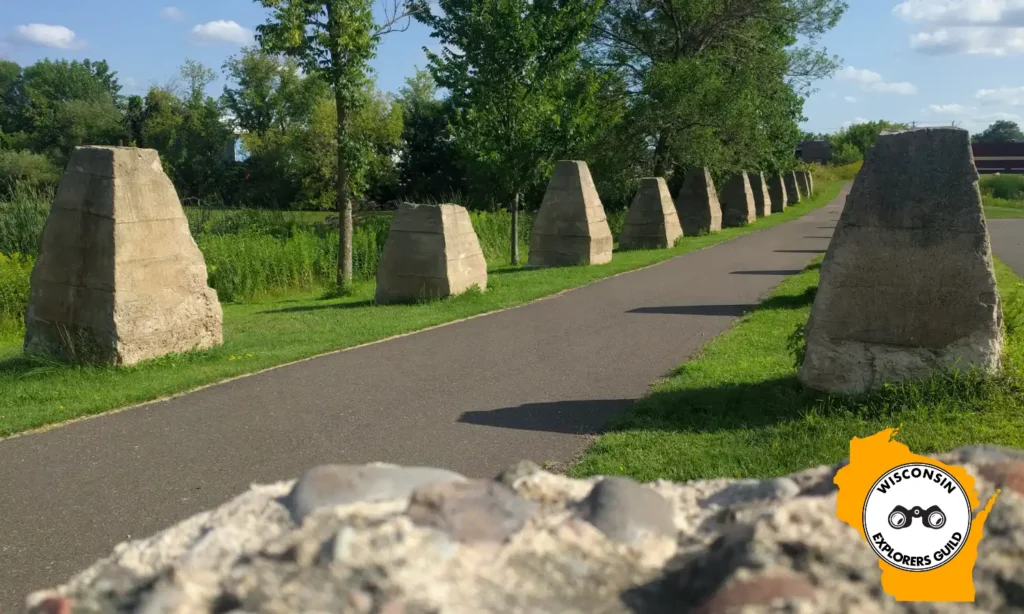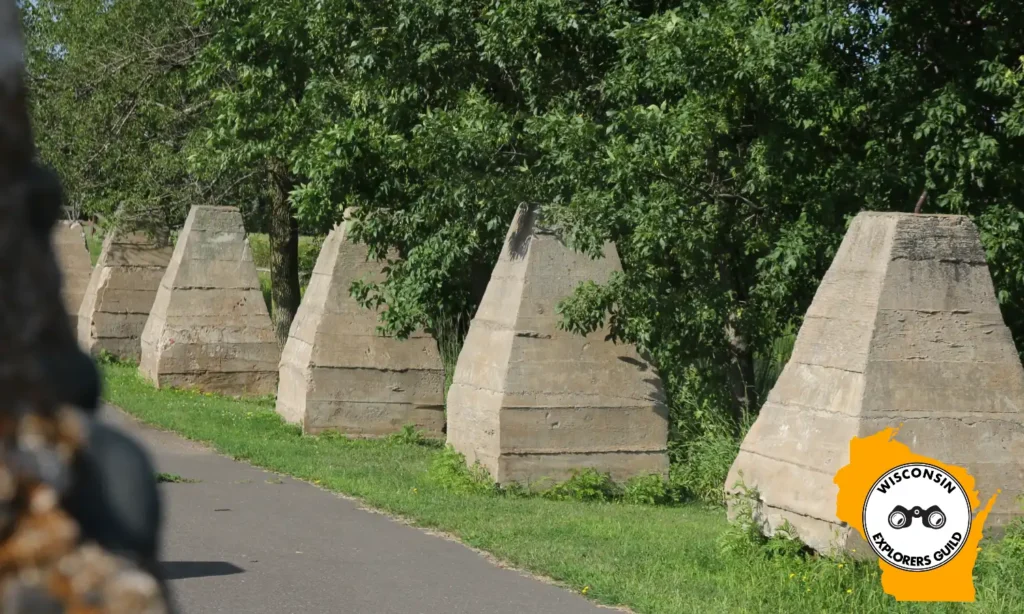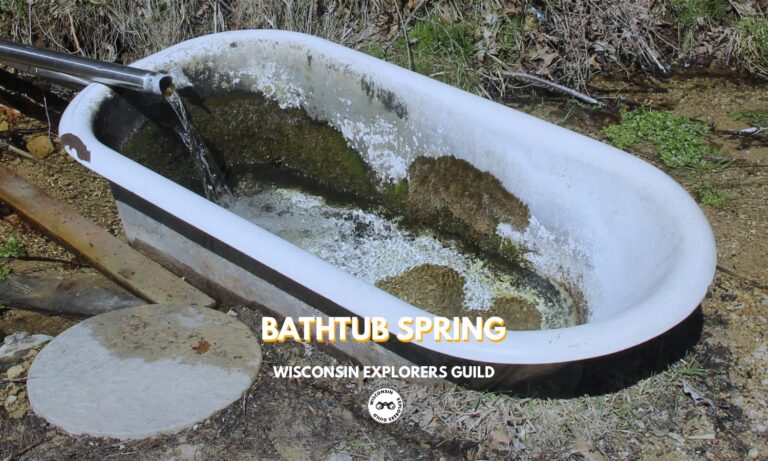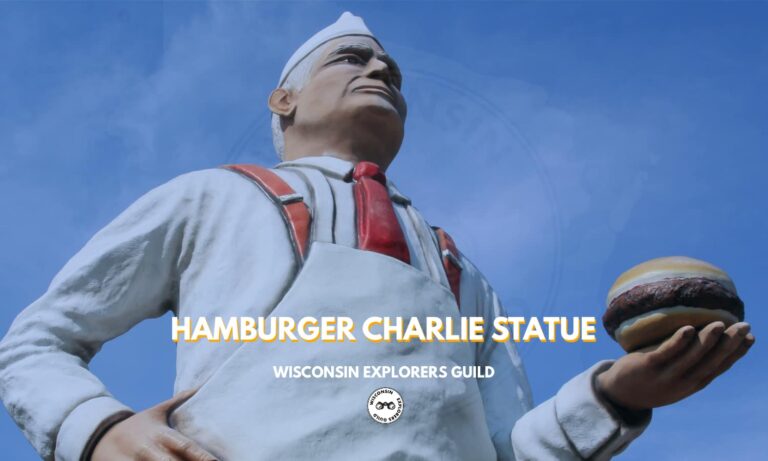In Rice Lake, you can visit the last remaining vestiges of a once-robust monorail system for transporting lumber to the local sawmill.
A Town Built on Timber
Platted in 1870 primarily due to lumbering efforts of the Knapp Stout Company, Rice Lake is a town built by the timber industry. By 1880, Knapp Stout was thought to be the largest lumber operation in the world. But then in 1900, the pioneering timber company was absorbed by the Rice Lake Lumber Company.
Over at the Wisconsin Historical Society, you can see an image of the Rice Lake Lumber Company from sometime around the turn of the century that shows how extensive its operations were.
In 1919, Rice Lake Lumber was purchased by the Edward Hines Lumber Company out of Chicago. Edward Hines also operated the Park Falls Lumber Company, and the newly acquired mill in Rice Lake was rebranded as the Park Falls Lumber Company.
So Much Lumber
But by early 1920, the Park Falls Lumber Co. had a problem. There was so much demand for the region’s freshly harvested hardwood lumber that they couldn’t process it fast enough.
To help speed up the lumbering process, the company began work on a state of the art monorail system that would transport lumber across its entire property.
Eventually, this lumber tramway would cart logs and sawn lumber from the Rice Lake holding pond to two different sawmills to the lumber yards and storage sheds where the finished boards were stacked and dried.
Pillars of Support
Building the monorail was quite the undertaking. Hewn logs of western pine, 12″ x 12″ in diameter and 42 feet tall, were added to a series of poured concrete support pillars.

The track itself was made of massive 15-inch beams that supported an eight-ton electric engine that could carry a quarter train-car load of timber across the company’s sprawling operation.
But all things come to an end. By 1929, after more than five decades of intense logging, the once plentiful hardwood trees of the area were all but depleted. And, no surprise, this caused the profitability of the mill to decline. Then the Great Depression hit, and the sawmill’s profits spiraled even further downward.
Our Latest Exploration …
- Bathtub SpringIn southwestern Wisconsin you can find an endless supply of fresh water flowing into a roadside bathtub — a place known as the Bathtub Spring.
The End of Rice Lake Lumbering
In 1934, the lumber mill (now operating as the Edward Hines Lumber Company) was destroyed by a fire in 1934, and the property was subsequently sold. The monorail stood until 1946 when it was torn down.
Of the once-extensive tracks that ran through Rice Lake, only 24 concrete pillars remain today.

These are now part of the Great Lakes Forestry Museum and National Lumbering Hall of Fame and anyone can visit them, 24 hours a day at any time of year, at Rice Lake’s National Lumbering Hall of Fame Park.
This park, right in the middle of the city on the western shore of Rice Lake (the lake), also includes Eagle’s Lookout, a popular bird-watching location, and the Rice Lake Fishing Pier and Boat Landing.
Note: Google Maps lists this as “Permanently Closed.” But the pillars are still there.
Header image: Detail of the Concrete Pillars of Rice Lake. Photo from the author’s collection.
Concrete Pillars of Rice Lake
- 100 Stein St, Rice Lake, WI 54868
- GPS Coordinates: 45.497939, -91.731619 (Google Maps)
- What3Words: ///tops.fattening.autofocus





